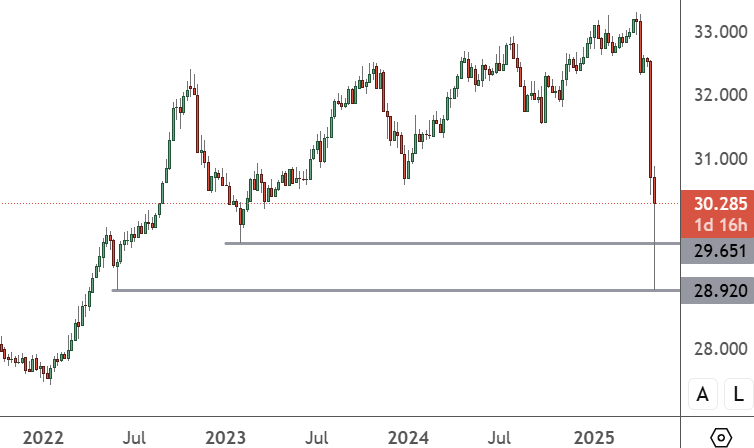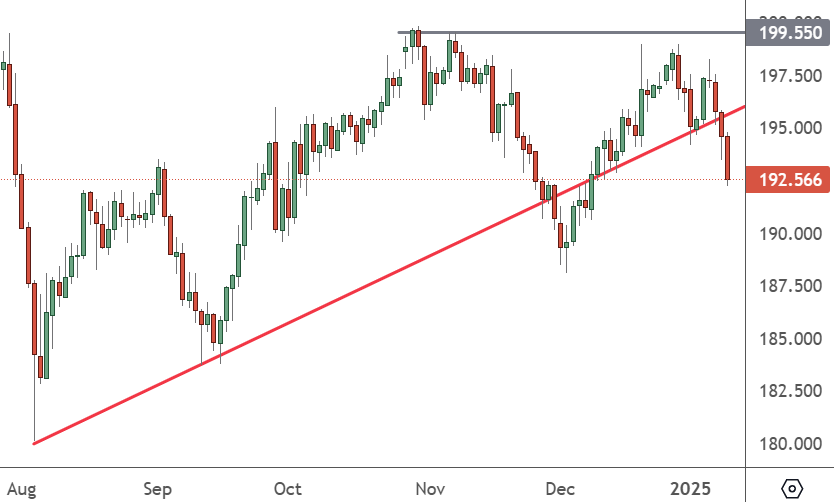The Taiwanese dollar has rattled financial markets with a move to levels not seen since 2022-23.

The USDTWD has rallied the most since the 1980s and crashed into support levels from 2022 and early 2023. Those two levels are now the barrier to avoid a deeper correction to the 2022 opening price near 27.
The Taiwan dollar surged after upbeat economic growth data combined with an easing of trade tensions. Strong tech earnings from the US added to the positive mood.
Talks between the United States and China to settle their trade differences, has led to demand for the TWD. The island’s economy grew faster than expected and there are increased hopes for semiconductor demand after big tech firms like Meta continued to target huge AI capital spending.
Local exporters were said to have added to the dollar route after they tried to sell the US dollar at the same time as demand for Taiwan’s currency improved.
“The faster-than-expected pace of Taiwan dollar appreciation caught many market participants off guard, prompting a rush to convert US dollars into local currency,” said Christopher Wong at OCBC Bank. “The recent Taiwan dollar gains have also been catalyzed by prospects of dialogue between US and China”.
“AI infrastructure build outs remain as key priorities for hyperscalers with the companies’ willingness to absorb the costs of tariffs,” Citi said. “We view this as positive for AI-exposed stocks,” including AMD, they added.
Taiwan’s state-backed banks were said to be buying the greenback in line with standard operations but it was not enough to stem the outflow.
A further driver for the move was exchange-traded funds selling dollars as clients took profits on offshore investments. The low liquidity market was met with that increased volume of sellers and the USD will now look to repair some of the recent damage.
Economies like Taiwan have a historically high exposure to assets denominated in US dollars and that has been a negative after American currency weakened in recent weeks, wrote Francesco Pesole at Dutch bank ING, in a note on Tuesday.
“Local players are now seeking greater US dollar hedging, as well as starting to diversify away from US investments,” he added.
Local chip and electronics manufacturers earn the majority of their revenue in US dollars and that could affect their profits in coming quarters.

